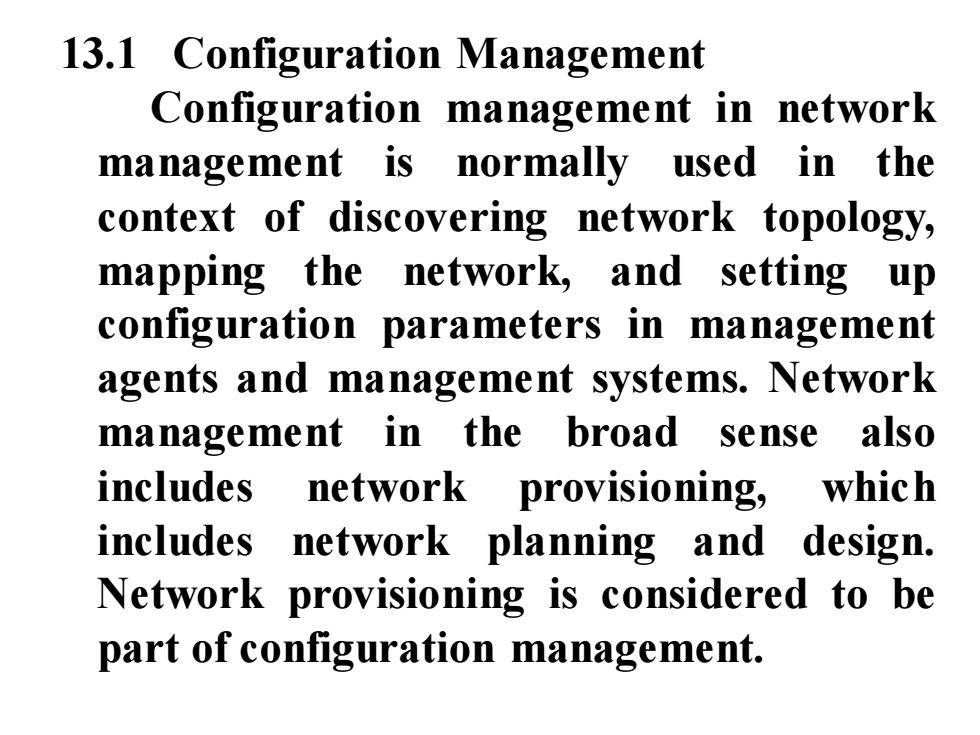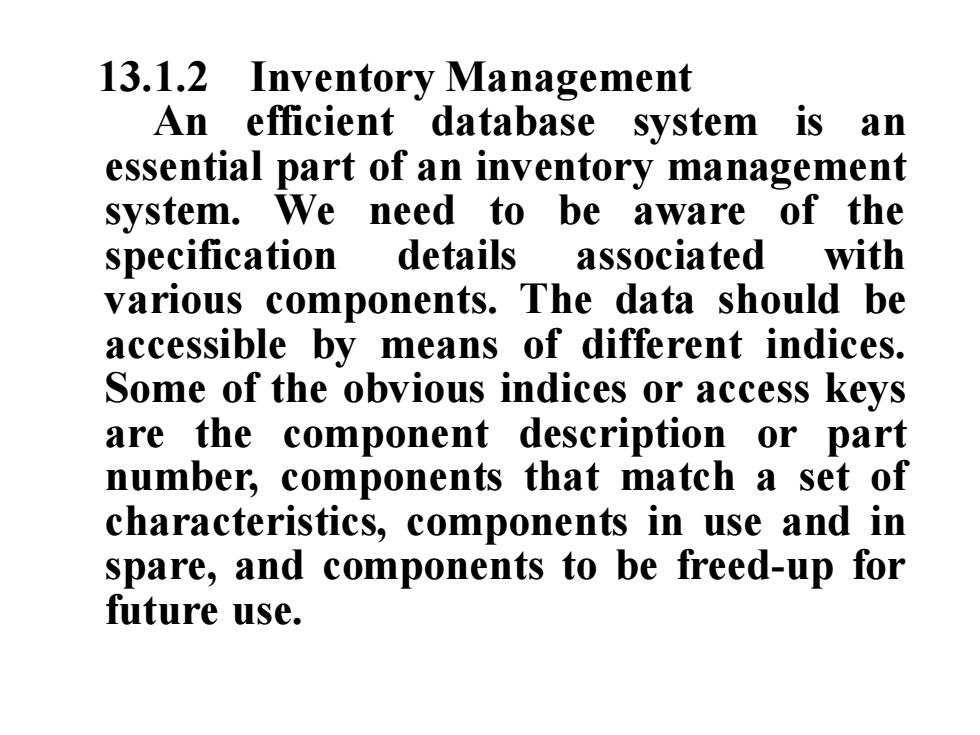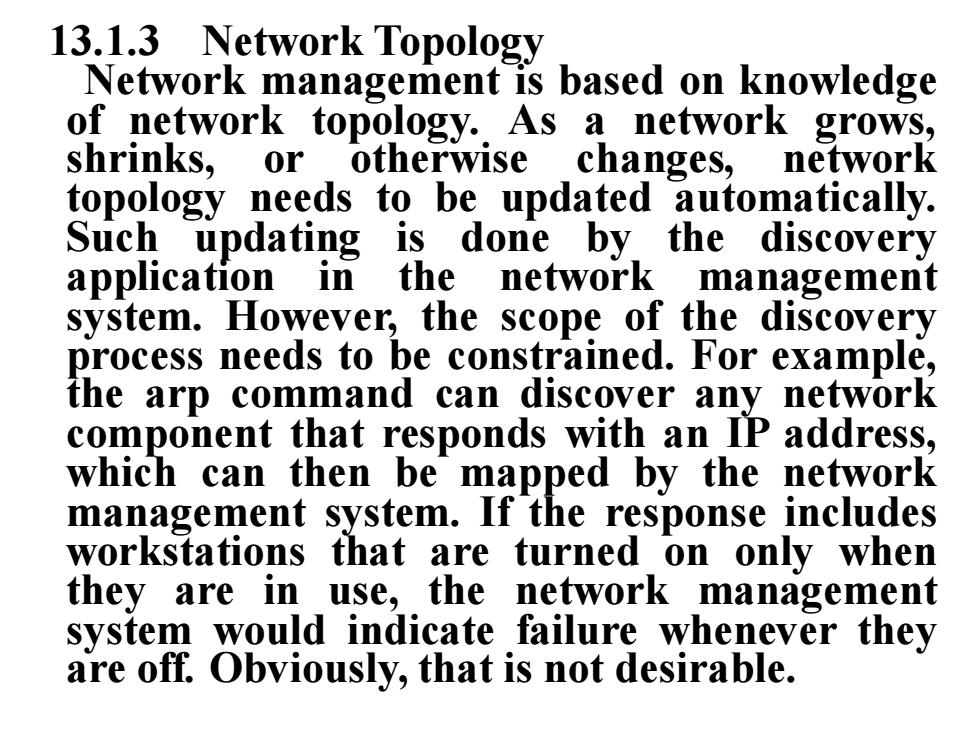
Chapter13 Network Management Applications The management of networked information services involves both network and system resources.OSI defines network management as a five-layer architecture.We extended the model to include system management and present the integrated architecture in Figure 13.1: L5 business management L4 Service management L3 network management or system management L2 element management or resource management LI network elements and system resources
Chapter13 Network Management Applications The management of networked information services involves both network and system resources. OSI defines network management as a five-layer architecture. We extended the model to include system management and present the integrated architecture in Figure 13.1: L5 business management L4 Service management L3 network management or system management L2 element management or resource management L1 network elements and system resources

13.1 Configuration Management Configuration management in network management is normally used in the context of discovering network topology, mapping the network,and setting up configuration parameters in management agents and management systems.Network management in the broad sense also includes network provisioning,which includes network planning and design. Network provisioning is considered to be part of configuration management
13.1 Configuration Management Configuration management in network management is normally used in the context of discovering network topology, mapping the network, and setting up configuration parameters in management agents and management systems. Network management in the broad sense also includes network provisioning, which includes network planning and design. Network provisioning is considered to be part of configuration management

13.1.1 Network Provisioning Network provisioning,also called circuit provisioning in the telephone industry,is an automated process.A trunk (circuit from the originating switching center to the destination switching center)and a special service circuit (customized to meet customer specifications)are designed by application programs written in operation systems,Planning and inventory systems are integrated with design systems to build an overall system.Thus a circuit designed for the future automatically derives its turn-on date from the planning system and ensures that the components are available in the inventory system
13.1.1 Network Provisioning Network provisioning, also called circuit provisioning in the telephone industry, is an automated process. A trunk (circuit from the originating switching center to the destination switching center) and a special service circuit (customized to meet customer specifications) are designed by application programs written in operation systems, Planning and inventory systems are integrated with design systems to build an overall system. Thus a circuit designed for the future automatically derives its turn-on date from the planning system and ensures that the components are available in the inventory system

13.1.2 Inventory Management An efficient database system is an essential part of an inventory management system.We need to be aware of the specification details associated with various components.The data should be accessible by means of different indices. Some of the obvious indices or access keys are the component description or part number,components that match a set of characteristics,components in use and in spare,and components to be freed-up for future use
13.1.2 Inventory Management An efficient database system is an essential part of an inventory management system. We need to be aware of the specification details associated with various components. The data should be accessible by means of different indices. Some of the obvious indices or access keys are the component description or part number, components that match a set of characteristics, components in use and in spare, and components to be freed-up for future use

13.1.3 Network Topology Network management is based on knowledge of network topology.As a network grows, shrinks,or otherwise changes,network topology needs to be updated automatically. Such updating is done by the discovery application in the network management system.However,the scope of the discovery process needs to be constrained.For example, the arp command can discover any network component that responds with an IP address, which can then be mapped by the network management system.If the response includes workstations that are turned on only when they are in use,the network management system would indicate failure whenever they are off.Obviously,that is not desirable
13.1.3 Network Topology Network management is based on knowledge of network topology. As a network grows, shrinks, or otherwise changes, network topology needs to be updated automatically. Such updating is done by the discovery application in the network management system. However, the scope of the discovery process needs to be constrained. For example, the arp command can discover any network component that responds with an IP address, which can then be mapped by the network management system. If the response includes workstations that are turned on only when they are in use, the network management system would indicate failure whenever they are off. Obviously, that is not desirable